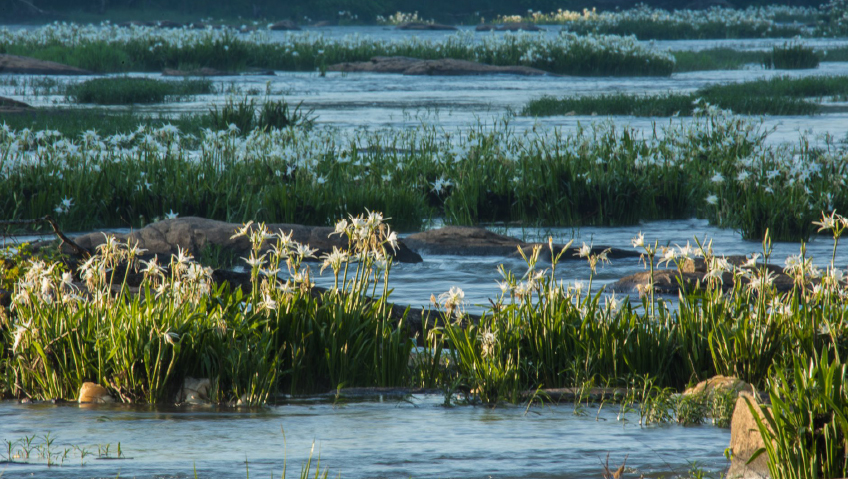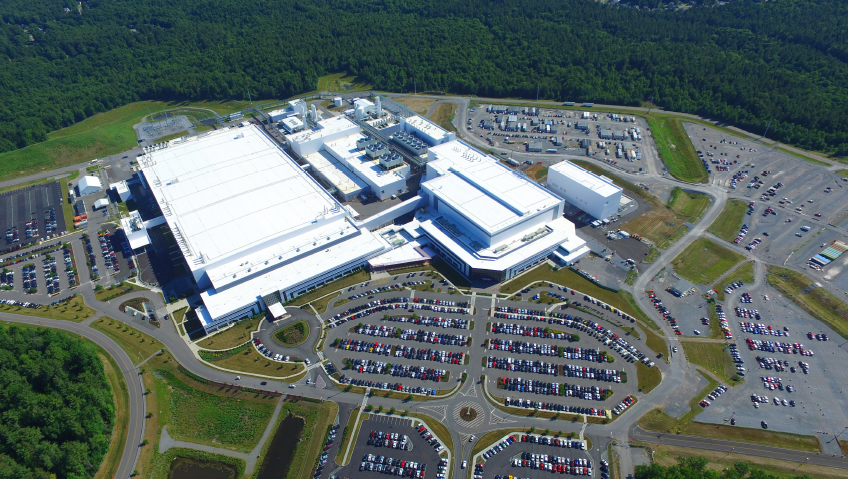The arts are essential to vital, thriving communities, and one of the best examples just might be the City of Sisseton, South Dakota.
When Nick Blaske and his wife, Alexis Monroe, moved to this small South Dakota city in 2009, there were no graphic design firms in the area. Hailing from Fargo, North Dakota, the two now call Sisseton their home, having established roots with neighbors, made lifelong friends, and become an integral part of the community. And word quickly got around that Blaske was an experienced graphic designer and Monroe an art school teacher.
Civic pride
Demand for a new mural in town saw Blaske and Monroe approached for their creativity. Through a partnership with non-profit GROW South Dakota, funds were allocated for a giant mural on the wall of an empty local building off Veterans Avenue, and the couple eagerly agreed to the project.
Proudly depicting an American Bald Eagle soaring skyward to the sunrise, the completed, brightly colored ‘Keeping Watch’ mural is accessible and relatable to both the Dakota people and the rest of the population, finding common ground and wide popularity. It also represents a first for the couple.
“We had no idea how we were going to create a 70-foot mural, but we utilized my technology,” says Blaske. Hooking up their projector to an Apple TV and iPhone, the couple projected a drawing made on the computer through the projector, which was then traced and painted. The striking image was such a hit that GROW South Dakota asked them to do another mural on the side of their building. This one was even more community-driven, with several designs posted on Blaske’s Facebook page, where locals could pick their favorite.
“Those first two murals showed how the arts can create something bigger than yourself,” comments Blaske. This led to the local Arts Council securing additional grant funding and working with the city to create a sculpture park. Blaske then designed ‘Reflections,’ a sculpture in the heart of Sisseton at the intersection of Highway 10 and Veterans Avenue.
“The eight-pointed star is a significant symbol in Sisseton’s Dakota and Scandinavian cultures,” reads the city’s website. “The sculpture’s mirrored finish invites viewers to see themselves as part of the community.”
Created in partnership with the Department of Transportation, the unique sculpture is also significant because of its location along Highway 10 (about four years ago, Sisseton became the first place in South Dakota to erect roundabouts on its highway). Blaske worked with a local welder and a concrete expert to create the sculpture and base.
A welcoming place
The word Sisseton is Dakota for ‘people of the valley’ or ‘people of the marsh.’ Since the area is an open reservation, residents don’t have to belong to the tribal entity to live in Sisseton. The population is about 51 percent Native American, and 45 percent white and European. “We’ve had an influx of Mexicans, Filipinos, and African Americans in the past few years,” says Blaske. “It’s a surprising and welcoming melting pot we have here.”
In Sisseton, pride in the Native heritage is everywhere. The Tiospa Zina Tribal School is home of the Wambdi, the Dakota word for eagle. The eagle—much like the eight-pointed star—is important to the Dakota people, as it represents the Morning Star. A few years ago, Blaske and Monroe adopted their son, Colton, who is thriving. Enrolled in the tribl system, the couple wants him to experience as much of his and his family’s culture as possible, through Sisseton’s rich heritage and strong Dakota roots.
For Blaske’s part, his artistic journey led him to the position of Executive Director of Sisseton’s Economic Development Corporation, Director of the Chamber of Commerce, and a position on the Promotion Board in the city’s tourism sector. When he took on his role as ED about three years ago, he had no background in economic development. But what he lacked in knowledge of economic development has been filled by the many connections he has made with residents and local entrepreneurs.
With a population of over 2,500, Sisseton is home to about 300 area businesses. Most are locally owned and operated, with no big-box stores. In just the past two years, almost two dozen new businesses have opened.
These include Katy’s Closet, a popular thrift and consignment store, and T&R Western Wear, a husband-and-wife team selling cowboy apparel and more. The store is well-suited to meet the needs of farmers around Sisseton. “They’ve been a great asset,” says Blaske.
The area is also home to Midwest Siouxvenirs, which sells merchandise exclusively made by local artists and artisans including unique beadwork, sculptures, and custom shirts. Foodies are catered for by Carlo’s, which offers authentic Mexican food; the Valley View Country Club; the famous Rosalie’s; and a bakery, restaurant, and lounge in the former home of the American Legion and dance hall.
“It’s crazy how hard-working this community is,” comments Blaske. If an unfortunate incident befalls a community member, businesses and local organizations pitch in and raise money or take other appropriate action. Fundraising includes weekly bingo at Rosalie’s, where funds are collected for different causes, along with Celebrate Sisseton. “You can get your bingo fix and help people who need it.”
A lot to see, a lot to do
One of the most prominent local attractions is the historic Stavig House. Seeking a better life, Norwegian immigrant Andrew Stavig came to the area, put down roots, raised a family, and established a business on the main street. Built in 1916, the Queen Anne-style home became a museum in 1996. Along with Stavig House, other attractions include Sica Hollow State Park and the Nicollet Tower & Interpretive Center.
These attractions will soon be joined by Unity Plaza. Blaske is currently working on a project with the City of Sisseton and area non-profits to transform the site of a former building into a plaza with a stage, amphitheater, seating, a grassy area for kids, and Wi-Fi. “GROW South Dakota has been an advocate for numerous public art projects around town, and they are going to be the fiscal sponsor for this project,” Blaske says of the work, which is expected to be completed by fall 2025.
Recently, in anticipation of population growth, the Sisseton Economic Development Corporation purchased agricultural land and residential lots near the local hospital. A 2023 housing study determined a mix of housing—including low, middle, and high-income properties, apartment complexes, single-family homes, and more—is needed in the area, and about one-third of the lots in question have been sold so far.
Also expecting more incoming businesses, the area is home to Sisseton Industrial Park. “It’s a perfect location to build that sector of the community because that also needs to be sustained as we grow,” says Blaske of the Park, which is owned by the Sisseton Economic Development Corporation (SEDC).
For Nick Blaske, Sisseton represents just how important art is to economic development. “It feels really rewarding to do something everybody can enjoy,” he says. “I think art is the unsung hero of economic development. It’s that place-making, that intangible sense of making your community better through its appearance. And the people themselves really take pride in what is around them.”






